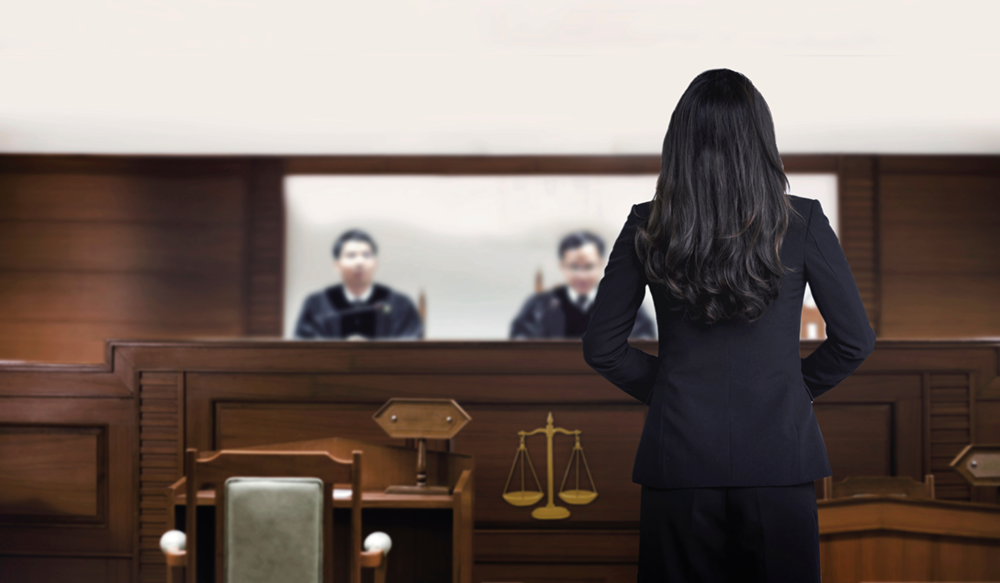Browsing the Intricacies of Trial Presentations: Tips for Seamless Distribution and Compelling Debates
In the realm of lawful process, the art of test discussion stands as a crucial factor of success. The intricacies inherent in trial presentations require a delicate balance of ability, skill, and method.

Comprehending Test Purposes
To effectively navigate a trial, it is critical to have a clear understanding of the objectives that need to be achieved. Before entering the court room, lawful teams must define their goals and preferred results. These purposes offer as leading principles throughout the trial, shaping strategies and influencing decision-making procedures.
Understanding test goals includes a thorough evaluation of the instance, lawful criteria, and the customer's ideal passions. Trial Presentations. It calls for a precise assessment of the truths, recognizing crucial problems, and expecting prospective difficulties. By setting measurable and specific objectives, lawyers can customize their presentations and arguments to align with the wanted outcomes
Additionally, a clear understanding of trial objectives makes it possible for lawful groups to focus on proof, witnesses, and lawful disagreements effectively. It allows for the development of a systematic story that resonates with the court and court, enhancing the overall case discussion.

Organizing Evidence Effectively
Having a clear understanding of trial purposes lays the structure for arranging proof efficiently in legal process - Trial Presentations. By straightening the discussion of evidence with the wanted end results of the trial, legal groups can enhance their disagreements and enhance their persuasiveness. One critical element of arranging evidence is categorization. Organizing evidence based upon motifs or significance to specific lawful aspects can help simplify the discussion and make intricate info more absorbable for the judge or court.
An additional crucial element in arranging proof effectively is developing a logical circulation. Presenting proof in a consecutive and meaningful fashion can help construct a compelling narrative that sustains the lawful arguments being made. In addition, using visual help such as timelines, charts, or graphs can further improve the company of proof and assist in clearing up intricate relationships or sequences of occasions.
Furthermore, making sure that all proof offered is acceptable and pertinent to the situation is essential. Unimportant or inadmissible proof can take away from the strength of the argument and potentially hurt the credibility of the presenting celebration. A precise evaluation and choice process ought to be carried out to include only the most impactful and lawfully sound evidence in the test discussion.
Crafting Convincing Stories
Crafting engaging narratives plays a pivotal function in presenting influential disagreements during lawful proceedings. When constructing a story for a trial discussion, it is vital to establish a clear story that highlights key factors and connects them in a systematic manner. By weaving with each other evidence, testament, and legal debates into a cohesive and convincing story, legal specialists can efficiently support for their clients and boost the likelihood of a positive outcome in the court.
Understanding Visual Help
Reliable use of visual help is essential to improving the effect and quality of trial presentations. Aesthetic help, when utilized purposefully, have the power to simplify complicated information, reinforce bottom lines, and leave a long lasting perception on the discretionary. read more To master visual aids in trial discussions, it is crucial to guarantee that they are clear, concise, and appropriate to the disagreements being made.
When including aesthetic help, such as charts, photographs, graphs, or timelines, right into a test discussion, it is important to keep them visually appealing yet professional. The visuals ought to match the verbal disagreements, supplying an aesthetic depiction of the info being gone over without frustrating the target market with unneeded information.
In addition, exercising with the aesthetic help ahead of time is imperative to ensure a smooth distribution throughout the test. Familiarizing oneself with the material, transitions, and timings of each visual help can help keep the circulation of the discussion and stop technical glitches that navigate to this site might emerge.
Supplying Impactful Closing Disagreements
An engaging closing argument offers as the culmination of a test presentation, enveloping the core story and convincing the court and jury in the direction of a favorable choice. Begin by describing the major arguments that sustain your customer's setting, stressing why the evidence provided throughout the test supports your story.
In addition, including emotional appeal can even more enhance your closing disagreement. Inevitably, a well-crafted closing debate should leave a lasting perception, compelling the judge and jury to rule in your client's favor.
Final Thought
To conclude, grasping test discussions includes comprehending goals, arranging proof, crafting narratives, using visual aids, and delivering impactful closing arguments. By implementing these techniques efficiently, lawyers can present their case seamlessly and make engaging debates in the court room. It is critical to browse the intricacies of trial presentations with accuracy and ability to accomplish success in legal proceedings.
By straightening the discussion of proof with the desired outcomes of the test, lawful teams can strengthen their debates and boost their persuasiveness (Trial Presentations). To grasp have a peek at this website visual help in test presentations, it is crucial to ensure that they are clear, concise, and pertinent to the disagreements being made
A compelling closing argument offers as the conclusion of a trial discussion, encapsulating the core story and convincing the court and court towards a favorable choice. Begin by describing the major disagreements that support your customer's placement, highlighting why the evidence offered throughout the trial sustains your narrative.In verdict, grasping trial discussions involves recognizing objectives, arranging proof, crafting narratives, making use of visual help, and providing impactful closing debates.